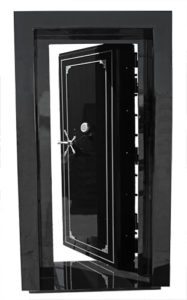Firearms, while often associated with sport, self-defense, or historical significance, are inherently dangerous tools. Their presence in a home necessitates a commitment to responsible ownership, particularly regarding safe storage practices. This article delves into the critical importance of secure gun storage, exploring the various methods, the legal implications, and the potential consequences of negligence.

**Introduction: Beyond the Basics – Safeguarding Your Home and Loved Ones**
The adage “a gun in the house is a gun that can be used” isn’t just a slogan; it reflects a stark reality. Accidental shootings, suicides, and even criminal acts can stem from inadequate gun storage. This article goes beyond the simple “keep guns locked up” advice, exploring the nuances of safe gun storage practices to minimize risks and promote responsible ownership. It’s not merely about preventing accidents; it’s about fostering a culture of safety within the home and community.
**Understanding the Risks: Accidental Discharge and Beyond**
Accidental shootings are a tragic reality, often stemming from a combination of factors, including carelessness, inadequate storage, and the inherent complexity of firearms. Children, even if well-intentioned, can be drawn to unsecured firearms, leading to devastating consequences. Furthermore, domestic disputes or moments of heightened emotional distress can escalate into tragic incidents if firearms are readily accessible. The presence of a firearm can significantly increase the risk of suicide, particularly for individuals experiencing a mental health crisis.
**Safe Storage Methods: Beyond the Gun Safe**
While gun safes are a crucial component, they are not the only solution. The choice of storage method should depend on the individual’s circumstances, including the number of firearms, the presence of children or other vulnerable individuals, and the layout of the home.
* **Gun Safes:** A robust gun safe, properly secured with a combination lock or a biometric system, is arguably the safest option. The safe should be stored in a location inaccessible to children and unauthorized individuals. Regularly checking the safe’s functionality is also essential.
* **Trigger Locks and Gun Locks:** These devices prevent the firearm from firing, but they are less secure than a safe and should not be considered a primary method of storage. They are often recommended as an additional layer of security, particularly when the firearm is not immediately accessible.
* **Trigger Locks and Gun Locks:** These devices prevent the firearm from firing, but they are less secure than a safe and should not be considered a primary method of storage. They are often recommended as an additional layer of security, particularly when the firearm is not immediately accessible.
* **Storage in a Secure Location:** Even a locked gun cabinet can be vulnerable if it is in a readily accessible location. Consider the layout of your home and ensure that any storage location is out of sight and reach of children.
* **Unloading and Disassembling:** In certain circumstances, unloading and disassembling the firearm, followed by secure storage, provides an added layer of security, particularly if the firearm is not readily accessible to others.
**Legal Considerations and Responsibilities**
Gun storage laws vary significantly by state and jurisdiction. It’s crucial to familiarize yourself with the specific regulations in your area. These laws often dictate the minimum standards for gun storage and may include penalties for violations. Failing to comply with these laws can result in fines, legal repercussions, and a severely tarnished reputation. In addition to legal obligations, responsible gun owners have a moral responsibility to prioritize the safety of others in their homes.
**Case Studies: Lessons Learned from Tragedy**
Tragic events involving unsecured firearms highlight the devastating consequences of negligence. Real-world case studies often reveal patterns of inadequate storage that could have been avoided. These examples, while distressing, serve as crucial learning opportunities, underscoring the necessity of proactive safety measures. The media often reports on tragic incidents involving firearms, and analysis of these events frequently points to inadequate storage as a contributing factor.
**Beyond the Home: Storage in Public Spaces**
While this article focuses primarily on home firearm storage, the principles of responsible storage extend to any environment where firearms are present. Gun ranges, shooting clubs, and other locations where firearms are handled require strict adherence to safety protocols and secure storage practices.
**Conclusion: A Commitment to Safety and Responsibility**
Safe gun storage is not merely a legal requirement; it’s a fundamental responsibility for any firearm owner. By understanding the risks, implementing appropriate storage methods, and complying with local regulations, we can significantly reduce the likelihood of accidents, suicides, and other tragic incidents. Ultimately, prioritizing safe gun storage is a commitment to the well-being of ourselves, our families, and our communities. This commitment demonstrates a respect for the power of firearms and a dedication to responsible ownership.
